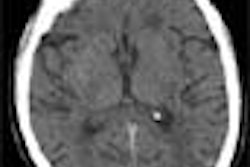CHICAGO - Stage I tumors detected with lung cancer screening that were 2 cm in diameter with doubling times typical of lethal malignancies proved fatal when unresected, according to a study presented Wednesday at the RSNA meeting. These findings provide compelling evidence for the aggressive treatment of lung cancer detected through screening, said Dr. David Yankelevitz of Cornell University.
To evaluate the possibility of overdiagnosis and the lack of aggressive treatment in the context of traditional radiographic lung cancer screening, Dr. Yankelevitz and his colleagues reviewed published and raw data from several lung cancer screening projects performed in the 1970s. As the screenings were performed decades earlier, the researchers knew the outcomes for these patients.
According to Yankelevitz, "A broad definition of overdiagnosis is the detection of a malignancy, generally through screening, such that the malignancy progressed so slowly that it was not going to produce signs or symptoms before the individual died of some other cause."
The researchers focused on Stage I tumors—the only category in which overdiagnosis would prove a concern. The researchers used the databases to measure the diameter of the lesions detected during screening. They supplemented this data with a measure of tumor aggressiveness as derived from tumor doubling times, which were estimated based upon standard exponential growth models that compared the difference between lesion measurements over a set time interval.
"In the case of the published data, we don’t always have the size of the lesion visible in retrospect. For those where we only know how long it was visible, we had to assume that in the time interval prior to that, it was invisible," Yankelevitz said. The researchers considered lesions visible when they reached a diameter of 8 mm.
The median size of the Stage I tumors examined in the screening projects were 2.0 cm and 2.2 cm, respectively, and the median doubling times for these tumors rated 130 and 150 days, respectively. In determining tumor aggressiveness, Yankelevitz said he and his colleagues tried to be conservative in their estimates.
"We find that this size range of cancers that are left undetected tend to be fatal," Yankelevitz said. "We went to the CXR database and chose cancers that were within the size range of 1.5 to 2.5 cm, and we found 52 cases there that were unresected in that size range. There was a 94 percent fatality rate—all stage I."
By Leslie Farnsworth
AuntMinnie.com contributing writer
November 28, 2001
For the rest of our coverage of the 2001 RSNA meeting, go to our RADCast@RSNA 2001.
Copyright © 2001 AuntMinnie.com



















